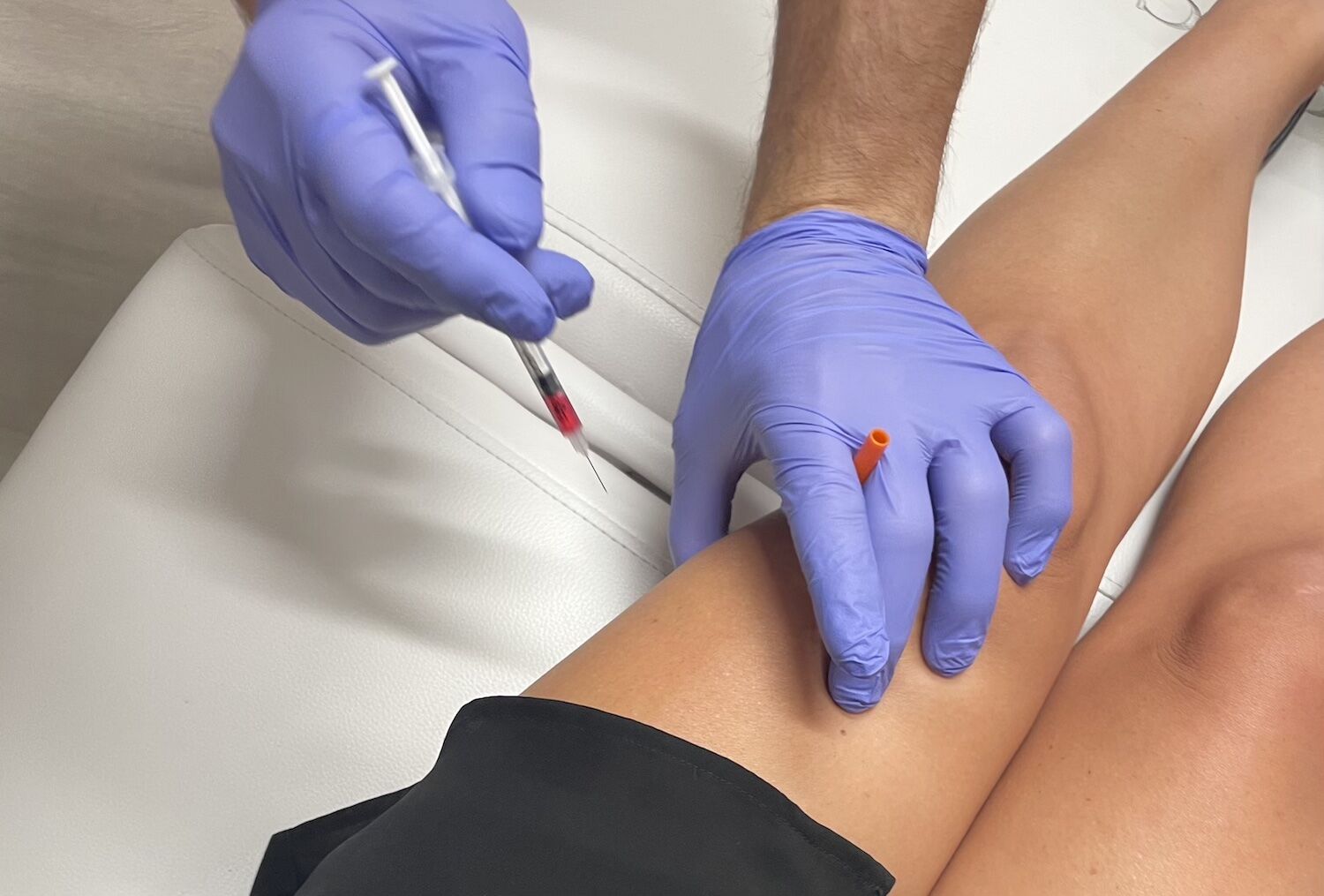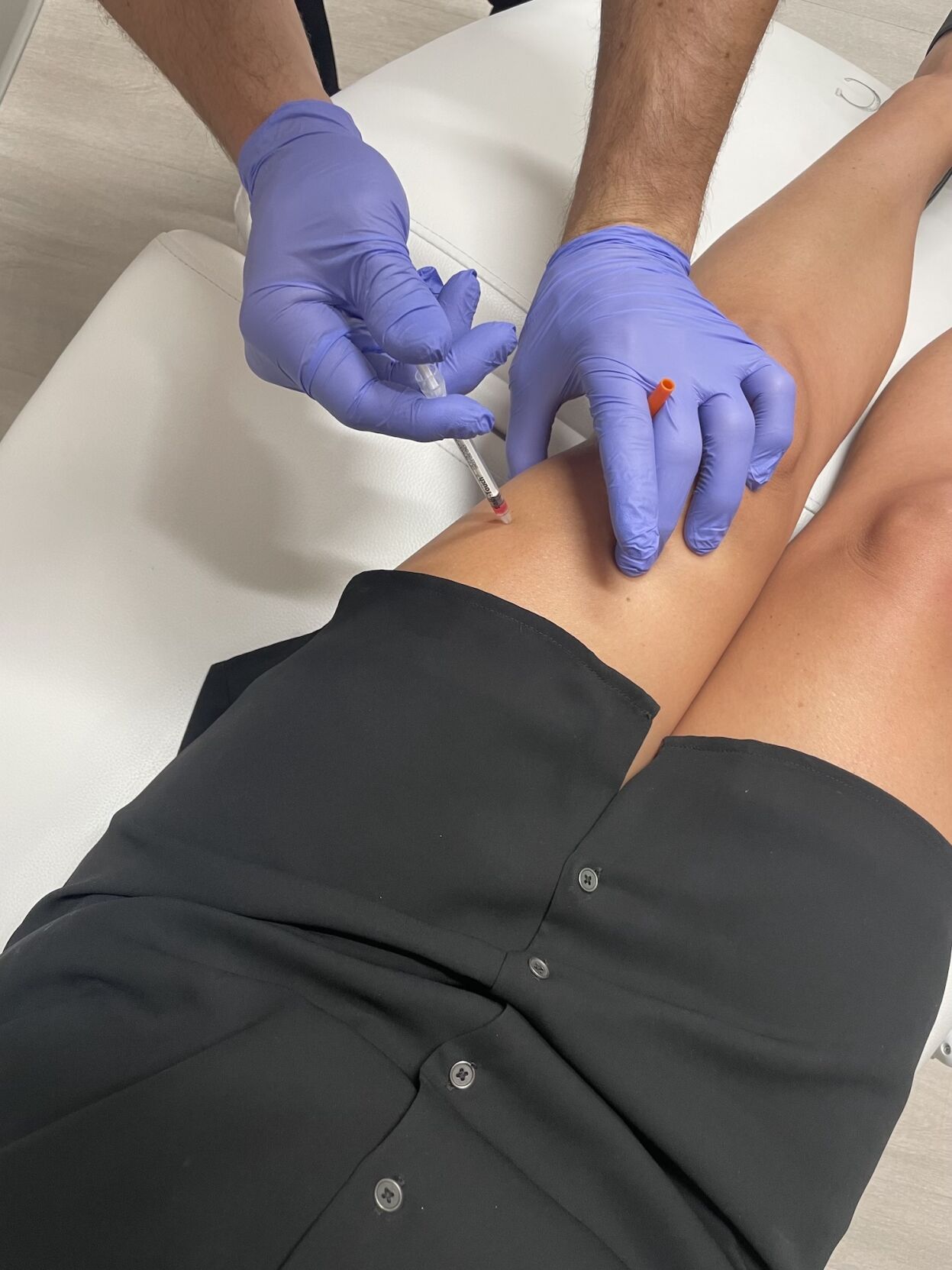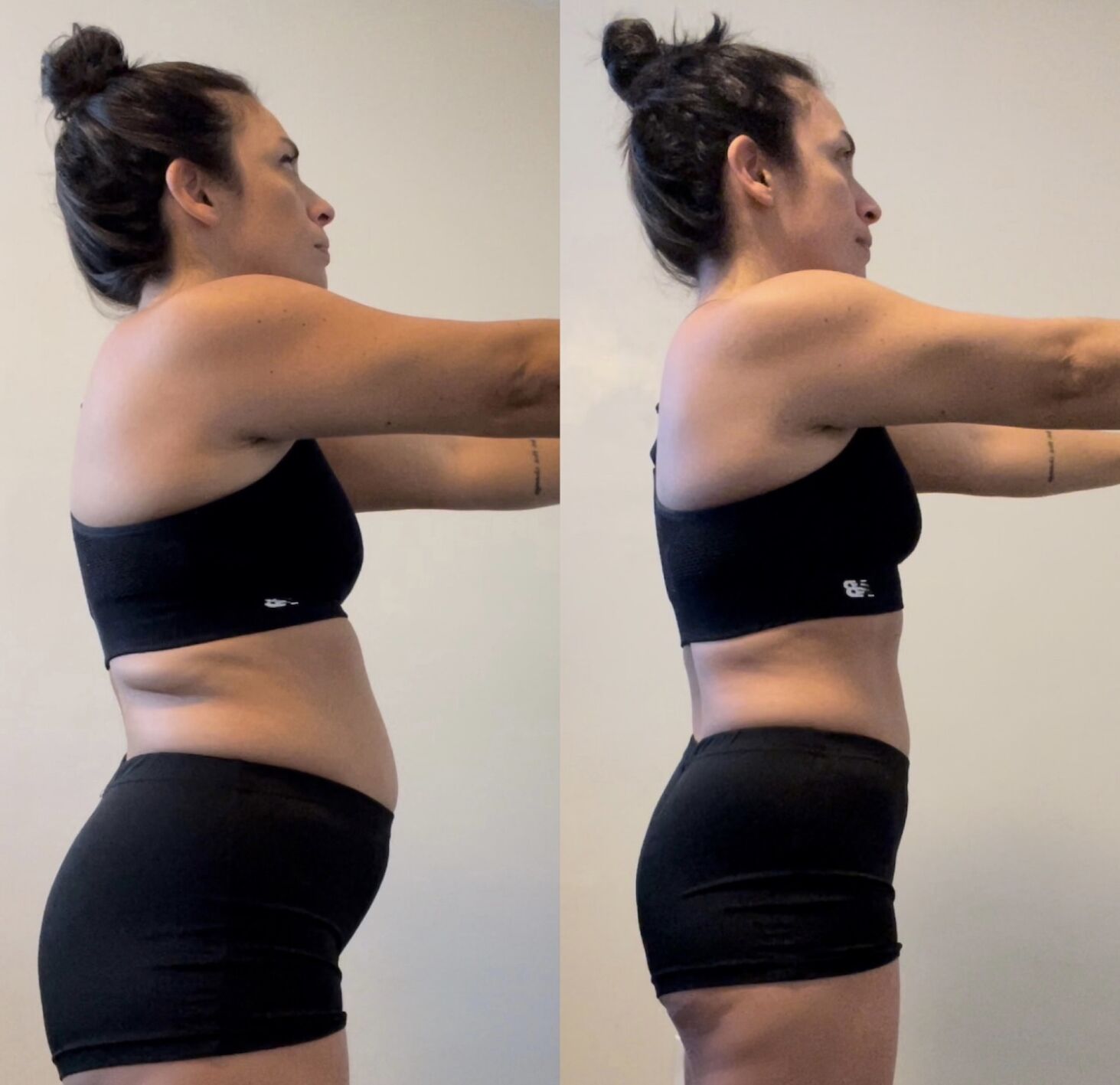
semaglutide-glp1-0323.jpg
Editor’s Note: This article is not an endorsement of semaglutide (GLP-1) injections (such as Ozempic or Wegovy) and should not be taken as medical advice. Consult your healthcare provider or primary care physician before considering treatment. This is a personal account from a writer doing her own research into the topic. The writer is not a medical professional.
First Appointment | Background Info | Treatment | Stopping Use | Final Thoughts | Cost
I first heard about this new FDA-approved weight loss wonder drug while scrolling through my social channels last year. Ozempic, Wegovy, GLP-1s, semaglutide—these names and terms were everywhere.
Images of celebrities such as Kim and Khloe Kardashian, Chelsea Handler, Rosie O’Donnell, Mindy Kaling, Elon Musk, and others were showing off incredibly slim frames almost overnight. Some began referring to their new looks as “heroin chic,” recalling images of stick-thin ‘90s models.
In June of 2021, the FDA approved Wegovy and Ozempic, a drug that mimics a hormone called semaglutide (GLP-1) that helps regulate appetite and food intake, as a weight loss tool for chronic weight management. When paired with a healthy diet and regular exercise, some studies have shown that participants can lose around 10%-15% of their weight, with other studies showing that in those who were overweight or obese, 5.9% total body weight loss at three months and 10.9% at six months was achieved.
Of course, there were also plenty of articles warning of the negative effects of Ozempic and the complications of going off Wegovy. There are also philosophical conversations regarding pharmaceutical use for weight management that have continued over the years—anyone remember the Fen-Phen days of the ‘90s?
As someone who comes from a family that struggles with diagnosed obesity, it piqued my interest immediately, though I had a lot of reservations. But being a journalist, I needed to try it firsthand before recommending it as a potential weight loss tool for my family.
A quick Google search brought me to iThriveMD, a clinic offering these injections to patients in Mission Valley. After doing some initial research, I scheduled a visit to meet with Dr. Thomas Macsay, a naturopathic doctor and the VP of clinical operations.
Though losing weight was a goal (10 to 12 pounds ideally), what I wanted to find out was whether its side effects would be harmful or difficult to endure before I took this new tool to my family.

Inside the waiting room at iThriveMD where the clinic offers IV wellness therapies.
The First Appointment
Before the first injection, we chatted about my weight journey as well as my medical and social history (drinking, drugs, etc.) before drawing blood to send to the lab. This was to ensure that I met the medical requirements to take the semaglutide injections.
“Thyroid cancer and multiple endocrine neoplasia Type II are those Black Box warnings for semaglutide,” says Dr. Macsay. “If someone has a family history of it or history of thyroid cancer or those types of cancers, we will recommend against using semaglutide for weight loss, unless they’re working with an oncologist who clears them for therapy.”
As we spoke, he walked me through what happens in the body while taking these injections. Semaglutide (brand names Ozempic, Wegovy and Rybelsus) is an antidiabetic medication which has was developed by Novo Nordisk in 2012. It is used for the treatment of type 2 diabetes, as well as for long-term weight management for those struggling with obesity.
The injections are a natural-based peptide, a protein that occurs in our bodies, Dr. Macsay shared. It works by changing the way our bodies secrete insulin and glucagon—two hormones that work together to regulate blood sugar levels throughout the day.
“Insulin gets released when we put food in our body to drop all the nutrients and sugar into the body to store,” Macsay says. “So, what happens is it decreases insulin secretion, moderates nutrient absorption, and regulate storage of nutrients throughout the body. This is experienced as an overall slowing of the digestive system allowing for appetite suppression.”
Essentially, food moves out of our stomachs more slowly, making us feel full faster and stay full longer. It’ll also allow you to crave sugar less and break down our own internal sugar reserves first. “It’s pretty much … shifting our metabolism,” Dr. Macsay explains.
After a prick in my stomach, I was sent home with a second needle to inject myself the following week. I started off on a 0.25 mg dose for two weeks to get my body acclimated to the medicine.
Each syringe is filled with your designated dose and should be kept in the fridge until it’s ready to be used. Some patients choose to go in weekly to avoid having to prick themselves.
Background Info & Starting Weight
My baseline before going on the medication was “active but loves cheeseburgers.” I lift weight regularly, indoor rock-climb about once a week, and go on casual walks throughout the month. In the past, I’ve run marathons and kept up weekly mileage to stay fit.
But when it comes to nutrition, I crave all the bad-for-you foods, and because obesity runs in my family, I have to be careful about what I eat. The pounds come quickly and I have a propensity to overeat. Looking at me, though, no one would call me overweight or unhealthy, and I’m fully aware of that while writing this.
I’ve never desired to be model thin and being “healthy” can look different on every person—the scale and body measurements shouldn’t determine this.
During this experience, I chose not to workout (to eliminate another variable) and didn’t go on any type of diet. I ate what I wanted, for the most part, while still focusing on getting in some greens when I could. My starting weight was 142.4 pounds at 5’1”.

Injections can be done via your stomach, glutes, or thighs. I found that doing so on my thigh produced less gastrointestinal side effects than via my stomach.
What Happened While Taking Semaglutide
Weeks 1-4
On the first day, I felt okay, but over the course of the next two weeks, I experienced every side effect possible: fatigue, bloating, diarrhea, stomach pains, and a lack of appetite. Eating was rough; I ate little to nothing because of all the issues my body was experiencing.
I ate for calorie intake rather than to enjoy my meals. The fatigue was intense. I could barely keep my eyes open during the day. It wasn’t until Day 20 that I saw a steady four-pound weight loss (the scale previously shifted up and down a few pounds until then).
“I’m experiencing crazy fatigue and feel nauseated all day long. I’m hungry, but I don’t want to eat,” I wrote in my journal after one month of injections, the last being at 1.00 mg.
Unlike what I had heard and read, my sugar cravings remained the same and sugary foods didn’t taste awful to me. Some have reported that they no longer craved their favorite foods and that their taste buds changed, creating a bitter or unpleasant flavor when eating previously desired fare. This was never the case for me—for better or for worse.
Weeks 5-8
During this time, I stuck to the 1.0 mg dose and the pounds began to drop quickly—I lost about 1 to 2 pounds a week. Most side effects eventually went away, though the fatigue was still present.
Daily life became easier and I was starting to fit into clothes better, even regaining some energy. Honestly, it felt good.
Weeks 9-12
Toward the end, I felt pretty regulated and saw the most weight loss by going up to a 1.5 mg dose. Overall, the side effects were uncomfortable but expected. Meaning, any time you do a “magic” or “fast” dieting method, you can assume you won’t feel your best. It’s not natural.
In speaking with a friend who shared her own weight loss struggles, our conversation surrounded semaglutide injections as a way to kickstart a diet while learning how to make lifestyle changes.
iThriveMD offers dietary counseling online to help patients learn what may be triggering your need to overeat, what sensitives you may have that cause bloating, and how to eat more mindfully. This kind of understanding of your body and its needs is essential to maintaining long-term weight loss, no matter how you initially shed pounds.

Final results after 90 days.
Stopping Injections
After stopping, I did eventually get my cravings back in full force, so without eating a balanced diet and incorporating some level of physical activity in my weeks, it could easily lead to weight gain. I’ve already gained back three pounds before enforcing healthier eating habits and hitting the weight room again.
Dr. Macsay’s patients never stop cold turkey. “Once someone has been on an elevated dose for a few months, we’re going to taper them down over a month to a low dose and then ideally keep them there for like a month or two,” he says.
He shares that, similar to going off a medication, tapering gives our bodies the time to readjust to stopping treatment. Additionally, your appetite will start to normalize in the days and weeks after. Slowing that quick return to your normal appetite is essential to keeping the weight off. This is similar to those following a calorie deficit diet before returning to a more moderate calorie intake.
By the time I finished my last injection over the course of three months, I was up to 1.50 mg (the highest approved by the FDA is 2.4 mgs). My final weight was 132.2. While my clothes fit better, not working out added to muscle loss along with fat (which wasn’t part of my goals).
Final Thoughts on Semaglutide Injections
In thinking about conversations with my family and friends about the drug, those dialogues will center around semaglutide injections as a tool to work toward a healthier lifestyle while outlining the sometimes-intense side effects. Its worth considering how far we’ve come from pharma trends of the past to now, and the steps we’ve made to help individuals manage weight.
I believe that nothing can ever really replace a balanced diet and physical activity. There’s also more involved in weight struggles, including past trauma, family history, access to healthy meals, medical issues, and more that need to be taken into account. It’s a complicated conversation, and for any weight loss questions, it’s best to do your research and speak with your physician about what’s best for your body and goals.
Paying for Semaglutide Injections
Without insurance, most semaglutide injections around the city will be generic brands manufactured in-house and not Ozempic or Wegovy, the brands tied to a supply shortage. Because, although there’s an industry for this drug to be used for weight management, we can’t forget that its primary function is to treat patients suffering with Type II diabetes.
“There isn’t a patent on the actual medications. So compounding pharmacies can buy all the ingredients and precursors from American-based FDA-registered companies and make it in a legit compounding pharmacy,” says Dr. Macsay. “And then all they have to do is mix it with, like with ours, we mix it with B12 because that makes it technically a new type of medication and the FDA doesn’t consider this as part of that semaglutide shortage.”
Currently, at iThriveMD, the cost of injections starts at $299 a month without insurance and increases at 1.5 mg. However, the clinic is working to stabilize the cost and offer the injections at the same price for all doses. Most are recommended 6-12 months of treatment to see results and your physician may suggest staying on a lower dose long-term to maintain weight loss.



















